Difficult country children
Soviet navy and aircraft carriers ... For a long time these concepts were incompatible. Until that moment, as aircraft carriers appeared on the seas under the national flag, decades passed. But despite their actual birth, accomplished by the end of the 60s of the last century, the firstborn themselves were “ugly ducklings” in comparison with the American and British aircraft carriers, which by that time had already firmly entered a time of mature perfection.
The helicopter carrier "Moscow" - the 1123-th project - was not yet a full-fledged aircraft carrier, it was created to fight submarines. The Soviet naval theory of that time considered this task to be the key function of surface forces, therefore, in the peace period, Moscow was called upon to become a tracking ship for submarine strategic rocket carriers. In other words, this ship was supposed to “graze” them in the areas of combat patrols, and in addition, to cover in distant marches from NATO “KUGI” boats (shipboard strike groups). The first combat service of "Moscow" in the Mediterranean began just in 1968 year.
So in the history of domestic aircraft carriers the first "introductory" chapter was opened. Although, ironically, and history itself, the Soviet Union acquired a real aircraft carrier long before that - back in 1945 - when the unique trophy, the German aircraft carrier Count Zeppelin, fell into the hands of the Red Army. The advancing Soviet units captured him in Stettin, where the ship from April 1943 stood in the Oder canal. By that time, the Germans, who had begun building the Zeppelin in 1938, had no strength or resources to bring it to working condition, since everything at their disposal was thrown into the “battle for the land”. Just in the spring of 1943, Germany was preparing hard for the battle on the Kursk ledge. After his graduation, the Germans began to retreat and they were not up to the aircraft carriers. However, at the last moment, when Soviet troops broke into the city tank landing, a special German team of Captain 1st Rank Calera with the help of explosive devices managed to damage the ship, disabling the turbine and power generators. As a result, tons of water got into the hull through the cracks that formed and the ship was in a submerged state. In August 45th he was raised by the Baltic Fleet emergency service and included in the Soviet Navy.
It seemed that, on the whole, the German experience was quite capable of giving the Soviet leadership the opportunity to drastically reduce the lag in aircraft carriers from the same Americans, because the Zeppelin could be repaired and used as a test and training platform for creating its first generation aircraft carriers. Under the conditions of the then rigidly centralized power, it was enough for this to take one fundamental decision. That is exactly what Admiral N. Kuznetsov proposed to do - a longtime supporter of the idea of building aircraft carriers. His proposals were supported by the People's Commissariat of the shipbuilding industry, and the Leningrad Baltic plant agreed to the production of all necessary works. However, the Soviet leadership, still living in "battleship" ideas about the fleet, acted differently. By decision of the Government (Decree of 19 in March 1947), captured ships, inherited by the Soviet Union in a damaged condition, were subject to destruction. Kuznetsov was in disgrace, the new fleet commander, Admiral I. Yumashev, offered to carry out the above-mentioned destruction with "use" for the cause.
On "the day of the execution," 16 August 1947, the aircraft carrier, reclassified to a non-self-propelled barge by that time, was taken to a landfill. In continuation of this experiment, on a ship, 24 undermined combat charges placed on it in advance (including high-explosive aerial bombs weighing from 100 to 1 000 kg and 180-mm shells of naval guns). After the break in the explosions, which was used to study the damage, the ship was bombed by 25 Pe-2 bombers (a whole regiment!), Which dropped another 100 bomb. The target, however, hit only 6. The aircraft carrier remained afloat after this strike. Finally, the submarines drove 2 torpedoes into it, and only then the Zeppelin sank.
Outwardly, this ship looked quite traditional for that time, which could not be said about individual engineering solutions implemented in the design and distinguishing it from foreign analogues. The Germans created an aircraft carrier cruiser, endowed with the ability to conduct direct fire fighting with the enemy. At the design stage, it was planned to arm it with 203-millimeter implements, but subsequently the caliber was reduced to 150 mm. The aircraft carrier received armor protection class light cruiser, in particular the armored deck and side vertical armor of variable thickness. At the same time, the flight deck itself was conceived in such a way as to enhance the overall strength of the hull.
The most interesting part of the Zeppelin project was aviation. Aircraft take-off from the deck was to be carried out with the help of two K-252 pneumatic catapults from Deutsche Werke, while other devices did not have such devices. Both the Americans and the British and the Japanese took off planes only from an independent take-off. The catapult also allowed to increase the weight of the combat load of the starting aircraft.
Another interesting detail of the take-off from the Zeppelin was the launch carts, which ensured the coupling of the aircraft to the catapult during acceleration. Trolleys connected to the aircraft still in the ship's hangar, and with them elevators were fed up. There the cart with the aircraft was supposed to move along the rails by the force of the propeller to the free catapult.
As a result, the time and speed of start was won, because the cart was designed for instant connection with the catapult. After separation from the deck of "his" plane, the cart returned to the hangar along inclined chain conveyors.
The experiment was "a true lesson in vitality." If we take into account that the attacking forces “worked” in field conditions, in good weather, at a fixed large target, without encountering any anti-aircraft fire or counteraction from carrier-based aviation, which would be a natural element of a real combat situation, Zeppelin simply demonstrated fantastic vitality. Together with him, they "drowned" for a long time the key to solving many problems associated with the creation of aircraft carriers and the large fleet of the future. Surprisingly, but a fact: documentation on the study of the Zeppelin and on the testing of its survivability was not subsequently requested by any of the design bureaus that developed their aircraft carrier projects from scratch. Considering the greediness with which all captured German weapons and technologies were studied in those years, the case with the Zeppelin looks strange, even mysterious. Probably, the reason was in the predominantly “overland” thinking of the highest military-political leadership of the USSR. Ending 2 a year ago, the Second World War was almost an exclusive clash of continental powers on land, the main military efforts of which centered around ground operations. Of course, unlike the Pacific Theater, where the struggle of the United States and Japan took the form of rivalry at sea and where the leaders were aircraft carriers. On the Eastern Front, the fleet played a supporting role. The surface ships of the main classes - the battleships "October Revolution" and "Marat", as well as most of the cruisers, were taken out of the game in the early years of the war. Submarines, hunters, torpedo boats and minesweepers remained in the ranks. The Baltic and Black Seas, adjacent to the flanks of the extended Soviet-German front, were largely “locked” for our fleet until the 1944 year. So after the victory, the fleet seemed to be something secondary. This sensation has repeatedly intensified against the background of the nuclear race that has begun, because by the year 1947, the United States owned nuclear weaponsand the USSR is still not.
After the death of Stalin, by the middle of 50-x, there was a "change of milestones." The development of nuclear weapons, rocket technology, and the new leadership of the country brought with them a different “fashion” in their views on military strategy and weapons. Unlike Stalin, who was experiencing weakness for large surface ships, Khrushchev did not like the fleet at all. The only initiatives of the naval command that did not meet the strict rebuke of the First Secretary of the Central Committee were proposals for the development of specialized surface anti-submarine ships and nuclear submarines with rocket armament. The rest of the initiative-based developments on aircraft carriers, which were being conducted in some places in order to avoid the highest rage and organizational conclusions, were not specifically advertised.
By the end of 50-x - the beginning of 60-x, the US nuclear submarine fleet experienced rapid development, becoming an ever-increasing threat that was hard to ignore. Nuclear submarines were built in the Soviet Union, as well as created submarine missile carriers, armed not only with anti-ship missiles (PKR), but also ballistic, which gradually became a new element of strategic forces. True, the range of their weapons was still relatively small, but it was slowly but surely increasing: from 1 000 — 1 800 km at the beginning of 60-x to 2 500 — 2 800 km later 5 — 6 years. This put the fleet in front of a new task: to ensure in the event of war the combat deployment of its SSBNs (nuclear-powered ships with ballistic missiles) at the launch sites in the ocean and prevent the enemy from responding. “Upstairs” found a way out that seemed effective from a military point of view and acceptable from an economic one: to build anti-submarine ships of the far zone with specialized weapons (from depth charges and rocket-torpedoes to helicopters),
capable of independently detecting and destroying an underwater enemy at a great distance from the carrier ship (up to 150 km), which exceeded any other anti-submarine system of that time in the radius of action, not counting aircraft. In addition, the new ships could take over the function of the anti-submarine defense of groups of disparate ships during long-distance cruises and partly anti-aircraft defense.
Thus, American submarines caused the appearance of the first large aircraft-carrying ships of the Soviet Navy. The Central Committee of the CPSU and the Council of Ministers, by their resolution from December 3 of 1958, set the task of creating a remote anti-submarine defense ship (anti-submarine defense) by the year of 1964. A little later he was included in the "closed" shipbuilding plan for the five-year plan.
The formation of the appearance of a fundamentally new ship took the 4 of the year. Due to the novelty of the idea, the military represented by the General Staff of the Navy initially formulated conflicting requirements for the ship. So, with a cruising range of 3 thousands of miles (about 5 400 km) 18-nodal economic course (32 km / h) and autonomy of the entire 15 day, the ship should have a full speed of 38 — 40 nodes, that is, over 70 km at one o'clock. It remained unclear why the ship, armed with helicopters with a speed of up to 200 km / hour, needed this? Increasing modest values of range and autonomy would look more justified. At the initial stage, there were quite a few such “inconsistencies” and illogical technical requirements that were hanging in the air, which indicated the absence of clear ideas about the functional scheme of using the ship. The main headquarters justified the novelty of the case and nodded at the slowness of the Naval Academy in theoretical developments.
Oddly enough, proposals to optimize tactics came from the civil department - the design bureau of the TsKB-17 system of the Ministry of the Judicial Industry, which would repeatedly accuse the Navy of the lack of concepts regarding the use of fundamentally new ships and impose their views on the seamen.
The scenario of the action of the ship of the Far PLO dictated the minimum necessary composition of the helicopter group in 5 units, and the optimal one for working around the clock - in 14. Further conclusions were repelled by this fact and continued on the 1123 project. Other proposed options remained on paper, since they were calculated for a helicopter grouping of half the size. The laying of the Moscow helicopter carrier, the one from Sevastopol Bay, was carried out in Nikolaev in 1963. The second building of the 1123 project, Leningrad, was started to be built in 1965. But the long-range PLO ships were commissioned with a difference of only a year - in 1967 and 1968, respectively. They participated in trips to the Atlantic, Pacific and Indian oceans, besides their main task, they also performed the functions of the flagship ships of the “Kugov”. "Moscow" was a particularly frequent guest in the Mediterranean during the period of increasing Middle Eastern tensions and was part of our operational squadron opposing the American 6 fleet.
In the 1972 year, when work was already underway on new aircraft carriers with Yak-36m vertical take-off aircraft, Moscow was tried to be adapted for possible arming with these aircraft. They reinforced the flight deck, covering it with a heat-resistant compound - since the Yak took off and sat vertically, the jet stream from the engines could burn through or damage the unprepared ground for this. After the test, "Jacob" had to abandon the idea. The design of the 1123-th project did not fit the car with twice as large as the helicopter, the weight of which engines also created too high a temperature on the surface of the ship. Thus, the "carrier" from "Moscow" did not work. The third building of the 1123 project, Kiev, was dismantled on the stocks for the 1970 year, and his name was transferred to the first TAKR (heavy aircraft-carrying cruiser) of the next serial project with the letter 1143.
"Reincarnated" "Kiev" was a completely different ship, as it was conceived already in the "post-Khruschev" era. The idea of Admiral S. Gorshkov, who commanded the Soviet fleet since 1956, was to build a strategic ocean fleet and directly lead to the need to develop their own aircraft carrier groups. The new Minister of Defense, Marshal A. Grechko, shared these views. The military leaders found mutual understanding and enlisted the support of the Brezhnev leadership. It was at that moment that the huge technical gap between the Americans, who had the largest nomenclature of deck aviation in the world, including fighters, attack aircraft, reconnaissance aircraft, tankers, radar patrols and EW (electronic warfare), became especially obvious.
For the "Kiev" 1143-th project was planned air group of mixed composition: from the helicopters "Ka-25" and the aircraft "Yak-36". Vertikalka was protected by D. Ustinov, who oversaw the defense industry from the CPSU Central Committee. On his initiative, on the basis of the "Yak", it was decided to create a ship attack aircraft, and in the future - a supersonic fighter. According to reviews of sea pilots, "Yak-36" was considered a very mediocre aircraft. On the Yaks it was impossible to fly at night, and besides, the radius of their action with vertical lifting from the deck and landing on it, which led to huge fuel consumption, reached just 70 — 80 km — in low-altitude flight and 150 km — at high altitudes. Practitioners had no doubt that the Yak was organically incapable of achieving serious success and in a combat situation could be easy prey for American F-14 “Tomcat” and F-4 “Phantom II” fighters, as well as British “Harriers” themselves in the battles for the Falkland Islands against the Argentine land fighter "Mirage". Attempts to modernize the Yak led to the appearance of the Yak-1985 in 38. It was somewhat superior to the base model, but against the background of the newest generation of deck-based MiGs and the Sukhikh created for aircraft carriers, it already seemed like an anachronism.
Nevertheless, the Yaks played a positive role in the development of Russian carrier-based aviation. Firstly, they acquired their own experience of using ship-borne jets, and secondly, a whole generation of skilled combatant pilots appeared. That is, by the middle of the 80, there was already someone to master the ship versions of the MiG-29 and Su-27.
Starting from Kiev, the Soviet aircraft carriers received a new semi-official numbering (it was preserved in the Russian fleet), reflecting the sequence of creation of aircraft carriers that had onboard deck aircraft (helicopter carriers in this series are not included). “Kiev” was called “one” because it was the first to be transferred to the fleet in 1975. The Minsk and Novorossiysk, which followed him, became respectively a “two” and a “troika”. In 1986, the number “four” was added to them - the TAKR “Baku”, later called the “Admiral of the Soviet Navy Gorshkovy”. To the chagrin of the sailors, “Baku” did not receive the new Yak-41 fighter jets, which did not have time to get into the series before the start of financial turmoil, and then the complete cessation of funding in the 1992 year. But this plane was considered by our specialists as unusually promising, some British experts who observed the flights of the 41 “Yak” at the air show in Farnborough in September 1992 adhered to the same opinion.
After “Baku” - “Gorshkov”, three new products should have appeared at the exit at once - “five”, “six” and “seven”. But only the “five” were destined to come to light, whose architecture acquired a “real” aircraft carrier look — a through-deck with a springboard and side-mounted aerial lifters. The ship received a radically improved structural protection of the surface and underwater parts. The ship was renamed many times, having had time to visit “Brezhnev” and “Tbilisi”, until it received its present name “Admiral Kuznetsov”. This ship eventually remained the only "active" aircraft carrier of the modern Russian fleet.
"Seven" was supposed to be the first domestic nuclear aircraft carrier "Ulyanovsk" project 1143-7. Its construction was started in November of 1988, and it was conducted at a very intensive pace. By the middle of 1991, the readiness of Ulyanovsk was 18%. But after the collapse of the Soviet Union, on November 1 of the same year, the ship was expelled from the Navy. Then, some western shipping company promised Ukraine a large order, for which it was necessary to clear the slipway occupied by Ulyanovsk. As a result, the slipway was released, the ship was dismantled, only the promised contracts were a myth ...
Soviet plans for the development of the military fleet to 2000 year provided for a powerful carrier group consisting of 10 ships: 4 - class "Kiev", 2 - class "Kuznetsov" and 4 - class "Ulyanovsk".
The 1123-D project had a total displacement of 17 500 tons, had a length of almost 200 meters. The width of the flight deck was 35 meters. At the time of combat services, the helicopter unit was fully staffed with fourteen Ka-25. The ships were equipped with the then-new JVR 1 SWO missile complex and the Storm anti-aircraft missile system. Other anti-submarine armament was represented by two 12-barreled rocket launchers of RBU-600, there were also anti-aircraft barrels of caliber 23 and 57 mm.
Both Moscow and Leningrad were able to travel a distance of 12 000 nautical miles (about 22 000 km) with an economic speed of 15 nodes (27 km / h) without refueling. The crew with the pilots and the flagship headquarters was 800 people.
1143 project. Length 274 m, width about 50 m, height from the keel to the top point of the mast over 61 m. The largest displacement 42 thousand tons. The crew 1 500 people. At first, the air group consisted of 22 aircraft. Depending on the objectives of the campaign, they could be either 20 "Yaks" and 2 "Ka-25 PS" (rescue option), or 20 "Ka-25 PL" (anti-submarine) and 2 "Ka-25 PS". Subsequently, its composition was brought to "Kiev" and other similar-type TAKRs to 3 squadrons (approximately 30 — 36 machines): one aircraft and two helicopter.
"Kiev", "Minsk" and "Novorossiysk" outwardly already looked like real aircraft carriers - the corner deck, which left the axis of the hull to the left, and a typical aircraft carrier superstructure ("island") - on the starboard side.
The “substantive” difference between this ship and its American counterparts was in the bow, where the artillery installations and the so-called “main caliber” were placed — the most powerful anti-ship missiles (ASM) “Basalt”, which have no world analogues (as well as their further development) Granite"). The effective range of their shooting reached 500 km. Weapons of this class are deadly for all types of warships, including strike aircraft carriers. The aircraft-carrying cruisers of the 1143 project, despite the shortcomings of their aircraft, were an impressive force, and the attitude of the American fleet to them was very respectful. An example of this is the 1982 war in Lebanon, when the US 6 fleet, which at first sharply increased the activity of its aircraft carriers and rocket ships in the Eastern Mediterranean, markedly reduced it with the appearance of the Soviet “KUG” in this region, led by an aircraft carrying cruiser. Kiev".
“Baku” was significantly different from the first three. This ship was designed as a transitional variant from TAKR to an aircraft carrier with a full-fledged air group, equipped with horizontal take-off and landing aircraft. It reflects many of the new domestic appliances, mainly electronics. The ship "island" of a completely different architecture was identical to the add-ons of the next TAKR - "Admiral Kuznetsov". For the first time in Soviet practice a radar station with a phased antenna array (PAR) was installed on it, and in combination with other latest radar complexes, Podkat and Fregat, the ship received qualitatively different information capabilities.
Armament "Baku" was also strengthened and updated. "Basalts" in the launchers on it was 12 (instead of 8), which increased the effectiveness of the volley by one and a half times, and the installations of the Dagger anti-aircraft missile system radically increased the air defense of the cruiser. By the way, the “Dagger” to this day remains a means of destroying all types of foreign missiles, even those in the project.
Project 1143-7 According to the project “Ulyanovsk” had the following data: the largest displacement is about 80 000 t, length 322 m, width with the flight deck 84 m, power unit from 4 reactors - 200 000 hp The range of navigation - without restrictions. The crew of 2 300 people, the air group - 1 100 people, autonomy 120 day. Armament: 70 aircraft. 45 fighters "Su-27K", "MiG-29K", 8 "Yak-44" - long-range radar detection aircraft, 17 helicopters. 12 rockets "Granit" in the 3РК underdeck installations - "Dagger".
Of course, today Admiral Kuznetsov remains the country's greatest achievement in building aircraft carriers. Especially for this and future aircraft carriers, the deck versions of the outstanding Su-27 and MiG-29 fighters, as well as the Su-25 attack aircraft, were tested, and in the post-Soviet period only “deck-boxes” were built in a small series, such as “Su- 27K ”(“ Su-33 ”) and“ Su-25 UTG ”.
Full displacement, due to an increase in size, increased to 65 thousand tons.
The length of 305 m, the width of the flight deck 70 m, crew 2 100 people.
"Features" take-off from the deck begin when the cockpit overlooks the springboard. Technically, everything is clear: taking into account the small distance of the takeoff run, it sets the required angle of attack for the aircraft. With the usual take-off from the ground airfield, the front wheel of the aircraft begins to break away from the runway after the takeoff in 500 — 600 meters. And then through 100 meters with a small plane already descends from the deck. So, from this distance, the springboard, which has an elevation angle of 14 °, seems to be a mountain to which the aircraft should be directed. All sensations, habits subconsciously work against this. You feel like a skateboarder, whose rollers carry up the tube. The machine must take off even with maximum load when it weighs 30 tons. At the same time, the rate of "descent" from an aircraft carrier is less than 200 km / h. This is another feature, because during takeoff from the airfield, the take-off speed is 240 km / h. Takeoff is due to the large thrust-weight of the aircraft.
After the “derailment” from the springboard, the engines provide it with a so-called ballistic trajectory, that is, it is as if the fighter is “thrown” into the air, where in a matter of seconds it reaches the aerodynamic flight. In tests, as in real life, the minimum speed of “derailment” in 140 km / h was shown. At such a speed in normal conditions, no aircraft from the ground can take off. On the ship, taking off from the moment the aircraft began to “fly off” to the transition to aerodynamic flight takes 8 — 10 seconds. The voltage of the pilot is very high - the pulse rate during the start reaches 200 beats per minute.
Landing is just as complicated. The vertical descent rate is about 5 meters per second. The aircraft is approaching the stern at a speed of 240 km / h, while it is necessary to accurately bring it to the centerline of the deck. The moment of landing is fraught with two completely different overloads. The first is felt at the moment of touch - this is vertical.
2 — 3-fold overload, as the push on the deck is hard, and the spine and pelvis feel it. But then there is a sharp horizontal braking - the arresting machine for 2 — 3 seconds dampens the speed from 240 km / h to zero.
And a special article - flying at night. Here it is psychologically important to “turn off” your feelings and trust only the instruments. If you fly in the sky without stars and the moon at low altitude, it seems that you are in a black box without top or bottom. It takes an effort of will to “put aside” your feelings and rely on electronics. And then the trouble. Both with us and with the Americans, not all front-line deck pilots have mastered this type of work. This is a very complicated matter! ”
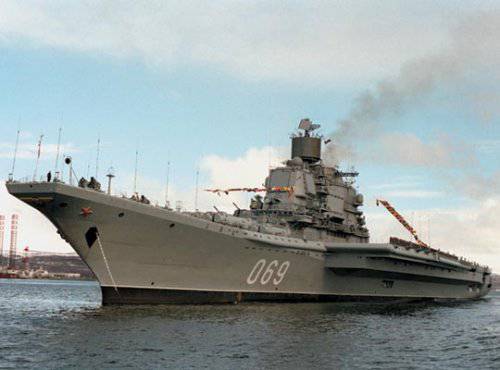
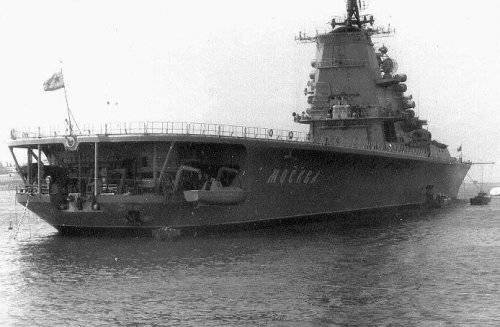
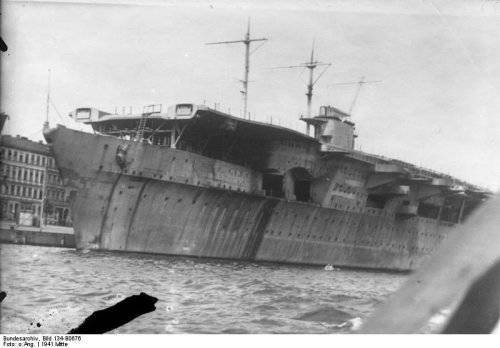
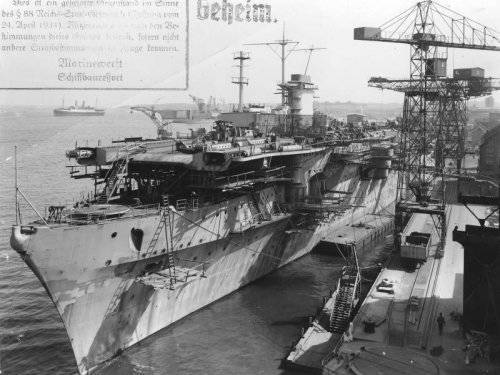
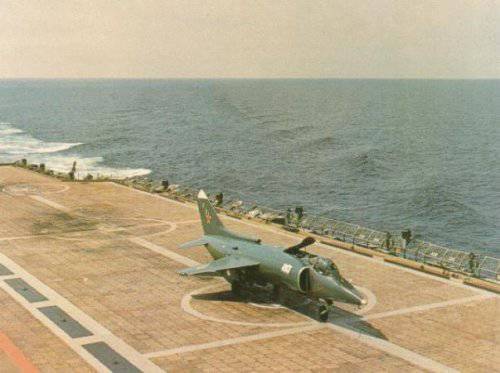
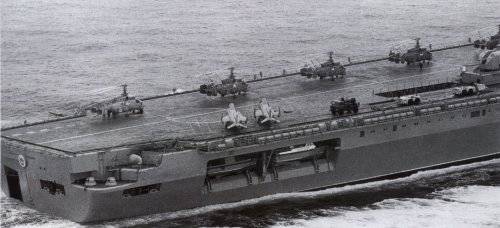
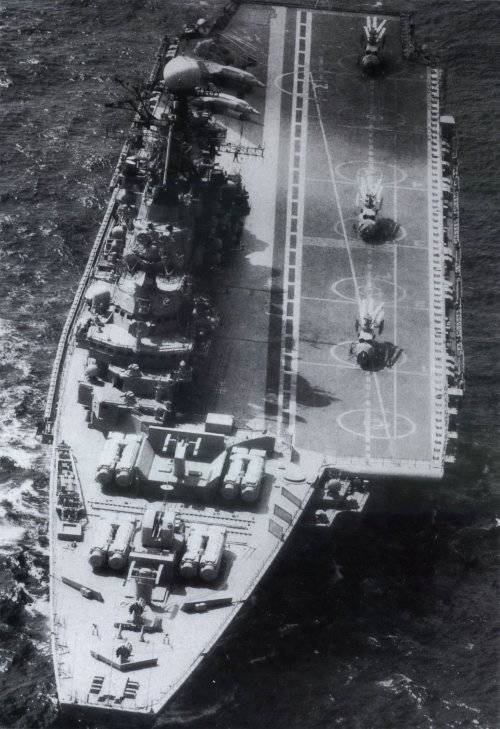
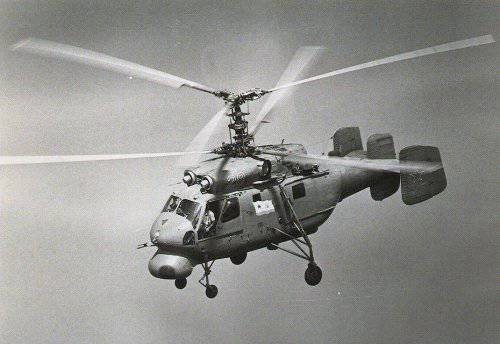
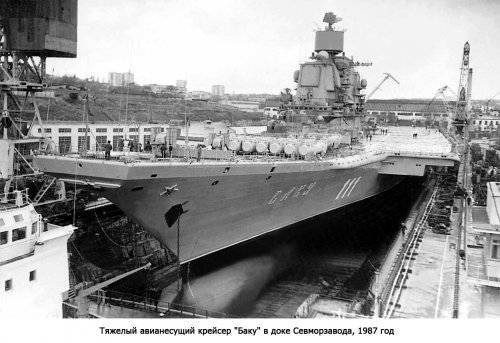
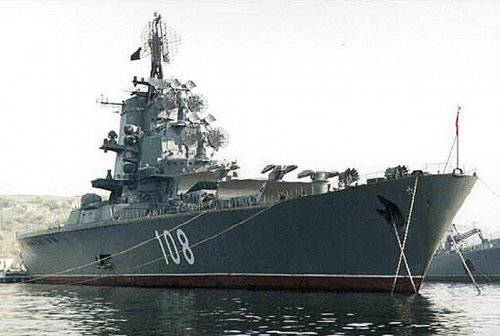

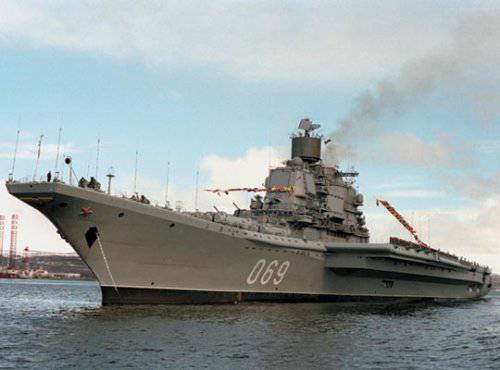
Information